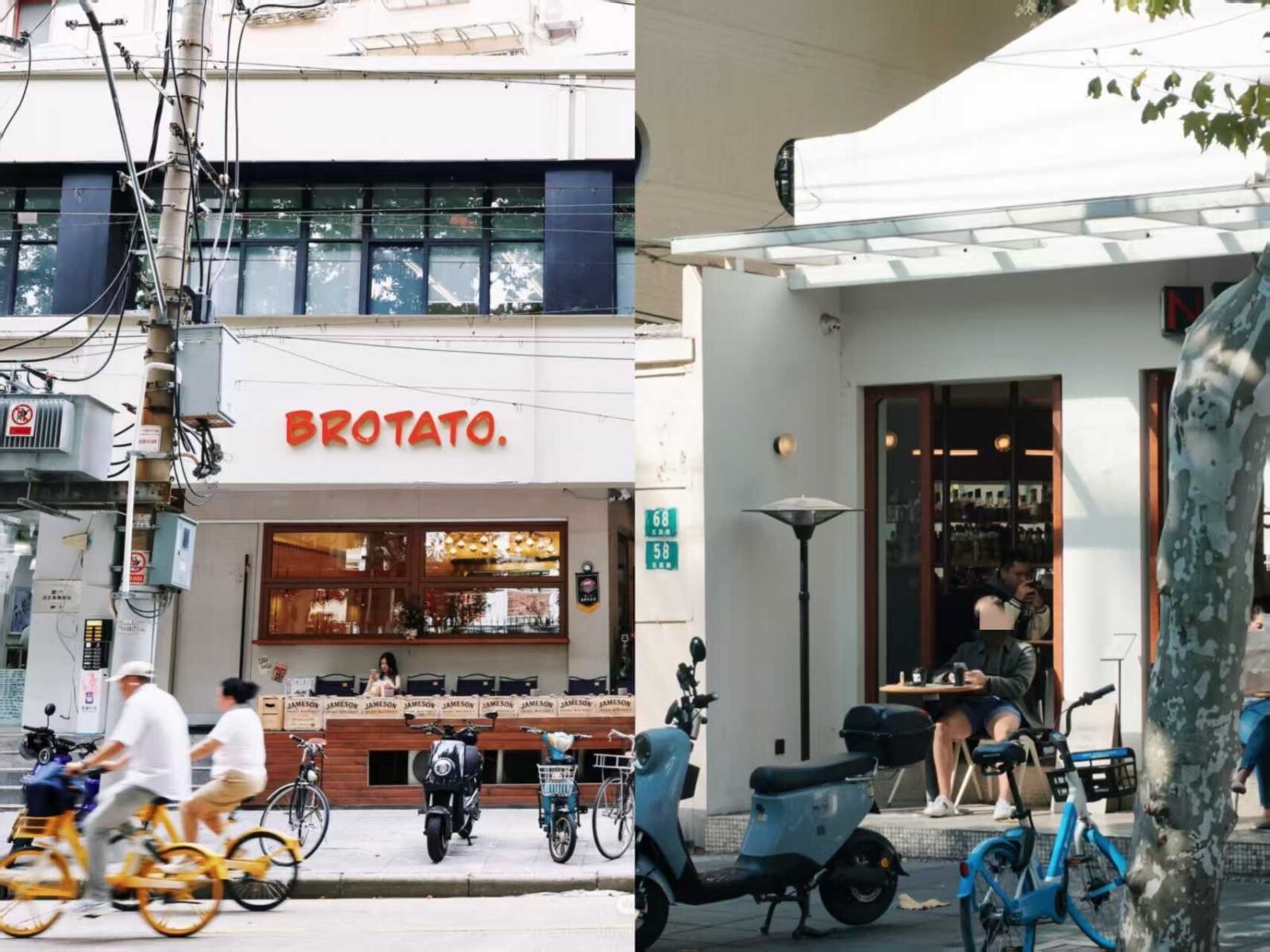From the ancient temples, bustling markets, and solemn skyscrapers to the captivating flowers of the city – it has something for you regardless of which part of the world you come from. Now, let me take you on a journey through the heart of the floral city with my guide. It summarizes the culture and stunning geological wonders alongside the deliciously mouth-watering dishes, all into one cherry-topped cake of experiences, and here are the top 10 places to visit while in Guangzhou. Located in the core of China, eighty kilometers away from Hong Kong, and hosting incredible state-of-the-art architectural marks, this city borders the Zhu Jiang River, which added to the backbone industrialization of the nation, making it one of the largest cities with a breathtaking and modern Gantry. In-depth, rich historical landscape dioramas adorned with a technicolor skirt of lush flowers and plants define a greatly surrealistic equilibrium of tradition and modernity, all of which share the identity of captivating Guangzhou. So, get ready to conquer the beauty of Guangzhou.
What Are the Must-See Historical Attractions in Guangzhou?
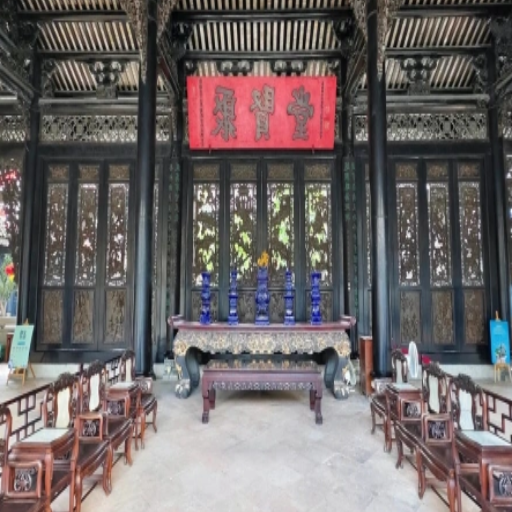
Chen Clan Ancestral Hall: Exploring Traditional Chinese Architecture
The Chen Clan Academy, also known as the Chen Clan Ancestral Hall, is one of the most stunning examples of traditional Chinese architectural forms from the Qing Dynasty. Constructed in 1894, it was both a meeting venue and a school for the descendants of the Chen family. Its craftsmanship is notable for the delicate combination of wood carvings, stone sculptures, and glazed ceramic decorations that adorn this complex.
Date of Construction: 1894
Distinctive style of Architecture: Lingnan architecture has courtyards and spacious open rooms that are usually more decorated than those in other regions.
Construction Materials: Wood, brick, and decorated ceramics, though more artisanal than structural.
Purpose: Originally a learning and worship venue, it is today the Guangzhou Museum of Folk Arts.
Rich images embodying folklore and various Chinese motifs unlock the region's tale of rich culture for visitors' curious eyes.
Mausoleum of the Nanyue King: Uncovering Ancient History
Historical Significance: The tomb of the Nanyue King is a masterpiece of Western Han Dynasty China (206 BCE—24 CE). This tomb, one of the major archeological discoveries of China, is infamously known for its artifacts and relics, which provide further context into the region’s burial rites and the Nanyue Kingdom's way of life.
Structure: The approximately 20-meter-deep stone chamber tomb was stratified into several layers, each containing a burial chamber or primary and side chambers with relics or secondary artifacts compartments.
Artifacts: Nanyue King’s bronze and jade chariots and over 1,000 gilded and jeweled relics showcase his powerful influence.
Excavation Highlights: The discovery of a graceful silk jade coffin marked the period's superb skill and exceptional culture.
Cultural Impact: It has dramatic historical insinuations and a captivating story, which makes it an incredible landmark. It was kept as a museum, serving great purposes for historians while still being a stunning tourist location.
Sun Yat-sen Memorial Hall: Honoring a Revolutionary Leader
Guangzhou commemorates the life and achievements of Dr. Sun Yat-sen, the modern founding father of China, in the Sun Yat-sen Memorial Hall. This historical structure serves as a cultural and educational space, reflecting Dr. Sun's values and visions.
Architectural Design: Unlike other memorial halls, this one has an aroma of tradition with a scent of modernism. It contains incredible octagonal roofs span a whopping 71 meters across without pillars blocking the beauty. It has a great blend of modern Chinese design and unique structural engineering.
Historical Significance: This was showcased in 1931, and it was built to honor Dr. Sun's revolutionary acts in bringing down the Qing Dynasty and forming the Republic of China.
Functionality: In modern times, this fantastic structure attracts tourists looking to learn about China’s revolutionary history. It has also become famous for events, exhibitions, and public gatherings.
This memorial hall encapsulates historical and technical marvels, uniting innovative design with traditional elements to pay tribute to the world's highly regarded leader.
Which Modern Landmarks Should I Include in My Guangzhou Itinerary?
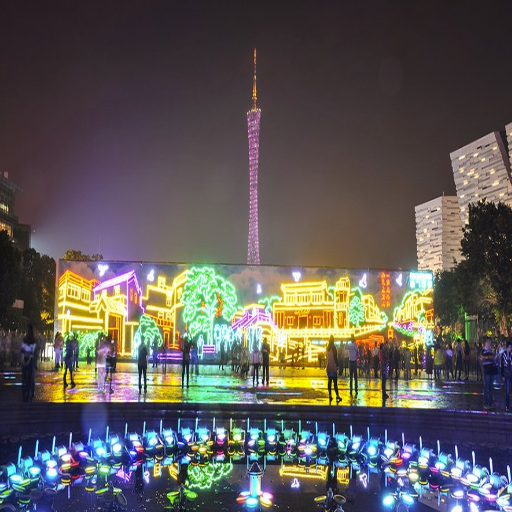
Canton Tower: Getting the Best View of Guangzhou City
With its unique architecture blending advanced engineering and beauty, the Canton Tower stands tall in Guangzhou as an astonishing modern architectural marvel, serving as the city's identity and showcasing its vibrancy. Towering over the city, the Canton Tower surpasses its competitors at a jaw-dropping height of 600 meters (1,969 feet); numerous tourists visit the tower for its observation decks, such as the 449 meters (1,473 feet) outdoor observation deck, to get an unparalleled sight of the whole of Guangzhou and its skyline.
Height: 600 meters (1,969 feet) makes it a global architectural marvel.
Observation Decks: There are multiple levels with the highest outdoor viewing deck at 449 meters (1,473 feet).
Unique Design: It is known for its twisting structure, combining aesthetics with advanced engineering.
Lighting System: Equipped with vibrant LED lights for stunning nighttime displays.
Recreational Options: Includes a skywalk, bubble tram, and restaurants for a complete visitor experience.
If you wish to delight yourself in sonic visuals, the Canton Tower is at your service. Guangzhou's exquisitely innovative engineering is reflected in this wonder. Ensure this is a must-visit point in the itinerary to grasp the city's beauty and modern architecture fully.
Guangzhou Opera House: Experiencing Contemporary Architecture
Acclaimed architect Zaha Hadid designed the Guangzhou Opera House, an artistic wonder of modern architecture. Like smooth stones that rub against each other, the bold and contemporary silhouette of the structure inspires natural elements. The opera house has an area of 70,000 square meters, and the main hall has a seating capacity of 1,804 people. The unique facade offers an iconic and futuristic glance at the structure with a glass and granite steel frame.
Design Inspiration: The building’s design significantly draws from its location on the Pearl River and is shaped like twin boulders resting in a river.
Main Auditorium: Besides being a visual masterpiece, the main hall incorporates world-class acoustics and soundproofing technology, guaranteeing a superb auditory experience during performances.
Technical Parameters: The steel frame construction helps maintain the structure's complex curves. The outer layer is also internally set for beauty.
Cultural Significance: The House is a stage for principal performances, linking modern and classical art.
This stunning venue embodies the fusion of avant-garde design and practical architecture, making it appealing to tourists who are lovers of art and design.
Huacheng Square: The Heart of Modern Guangzhou
Huacheng Square, or Flower City Square, represents a striking contemporary design in Guangzhou. Being a focal point for social, cultural, and recreational activities, it is a magnificent depiction of the city’s imagination and advancement.
Location and Accessibility: The Square is located in Zhujiang New Town, one of the most developed areas in Guangzhou. It is close to famous sites like the Bangladesh Museum, Gazhoun Tower, and Guangzhou Library. Because of its prime location, the square is essential for local and international tourists since it can be reached by public transport and major roadways.
Design and Features: Spread over 56 hectares, the square features carefully maintained gardens, allowing a mixture of greenery and urban space with fountains and lawns. Its construction focuses on renewable energy, with features like solar-powered lights and green materials used.
Cultural and Social Impact: The Flora Square is known for its social outreach activities. It is used for multi-purpose public use, art displays, and festivals, thus aiding in introducing multicultural interaction. Such activities nurture Flora Square as a perfect place for social activities.
As an important landmark, Huacheng Square represents the urban landscape of Guangzhou, which shows its modern architecture that embraces innovation, sustainability, and cultural enhancement.
What Are the Top Natural Attractions in Guangzhou?

Yuexiu Park and the Five Rams Statue: Combining Nature and Culture
Covering an area of approximately 860,000 square meters, Yuexiu Park is the largest urban park in Guangzhou and is located in the city's center. The park stunningly integrates natural vistas with culture, thus catering to both tourists and local citizens. It is famous for the Five Rams Statue, representing the legend of five heavenly figures who blessed Guangzhou with prosperity.
Yuexiu Park’s landscapes are stunning and diverse, incorporating serene lakes, green meadows, and hills like Yuexiu Mountain, which towers above the park at roughly 70 meters. Furthermore, the park has beautiful natural scenery supplemented by notable historic sites like the Ming Dynasty City Wall and Zhenhai Tower. The park is a great getaway at any time of the year because the visitors can take advantage of the multitude of amenities, including but not limited to walking paths, resting gardens, and open space for exercise. The attention to landscaping and public accessibility helped cement Yuexiu Park’s reputation as one of Guangzhou’s foremost natural beauties.
Baiyun Mountain (White Cloud Mountain): Escaping the City Bustle
Baiyun Mountain is located several kilometers from a busy city environment and offers tourists natural beauty and some culturally significant landmarks. The mountain is approximately 28 square kilometers and consists of many peaks, the highest being Moxing Ridge, also referred to as the “First Peak under the Southern Sky,” standing at an impressive 382 meters.
Numerous locally and internationally recognized sites, amenities, and parts of nature, such as parks and gardens, offer versatility for aesthetic seekers and nature lovers alike. One amenity includes a cable car offering stunning views of the lush surroundings and the city. The cable car alone stretches for about 1.7 kilometers and offers a variety of picturesque views.
For users looking for specific details, the rough geographical coordinates of the mountain allow easy access from many bus stops in the city. All the stops are located about 15 minutes away from central Guangzhou, and the buses include 63, 240, and 24. Like all other attractions, Baiyun Mountain offers numerous entrance fees, starting from the basic park fee along with charges for popular sites like Moxing Ridge and baiyun cable car versus the base park fee. These features make Baiyun Mountain prominent in terms of fitness and relaxation and rich in culture.
Pearl River Night Cruise: Seeing Guangzhou from the Water
The illuminated skyline of Guangzhou can be viewed from the water, providing a stunning perspective of the city’s night beauty via a Pearl River Night Cruise. Depending on the westward-facing port of Tianzi Wharf or Dashatou Wharf, which are easily reachable by tourists, cruises average 60 to 90 minutes. With ticket prices between 70 to 200 RMB for both the economy and luxury class, the cruises cater to many varied financial preferences.
There are two sets of primary operating hours for the cruise, from 6:00 PM until 9:00 PM and from 9:00 PM until 10:30 PM. Departures also happen frequently every half an hour to an hour. Along the outline tour of Haixinsha Island, Zhujiang New Town, and Canton Tower, some of the mighty landmarks available to be viewed under the stars are included. Meals served aboard the cruise are not included in the ticket. The added features combined with the fundamental characteristics render this cruise captivating and easy to afford for both tourists and locals.
Which Religious and Cultural Sites Are Worth Visiting in Guangzhou?
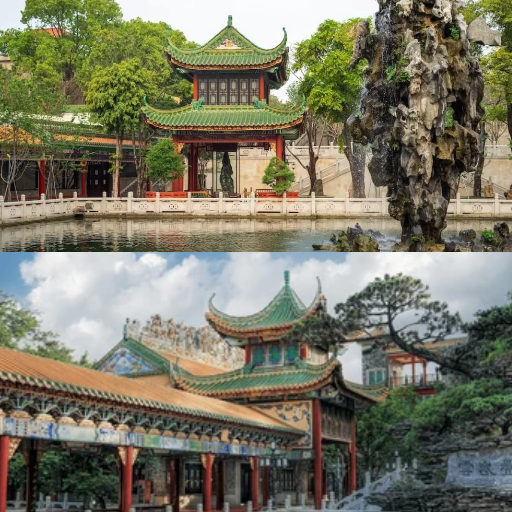
Temple of the Six Banyan Trees: Exploring Buddhist Heritage
The Temple of the Six Banyan Trees, or Liurong Temple, stands out as one of history's most important Buddhist temples for its beauty and architecture. This ancient temple is located in the Yuexiu District of Guangzhou, China, and was built in 537 during the Liang Dynasty. It remains a significant place of worship and culture today. At this stunning temple, visitors are greeted by the 57-meter tall octagonal Flower Pagoda. From the top, guests are treated to unforgettable views. The grounds are equally impressive; visitors can stroll through the tranquil gardens, marvel at the beautiful Buddha sculptures, and participate in various Buddhist ceremonies.
Location: Yuexiu District, Guangzhou.
Operating Hours: 9:00 AM - 5:00 PM Daily.
Entrance Fee: Approximately 5 RMB; additional fees are required for entering the pagoda.
Main Attractions: Flower Pagoda, Buddhist sculptures, and intricate designs of the ancient structure.
The Temple of the Six Banyan Trees serves a deeper purpose than being a place of worship; it represents China’s rich Buddhist culture and history, which draws thousands of tourists every year.
Sacred Heart Cathedral: Discovering Southern China's Catholic History
The Sacred Heart Cathedral, or the “Stone House” because it is entirely built from granite, is part of Guangzhou’s Catholic heritage. This cathedral's Gothic revival style of architecture makes it stand out and is a big reason why tourists flock to this historically important site.
Location: The tower can be found in Yuexiu District in the center of Guangzhou.
Operating hours: Visitors have access from 8:00 A.M. until 5:00 P.M., but this can change during relic ceremonies.
Entrance fee: Public access is free, and no costs are associated with visiting the site.
Main Attractions: Decorative glass showing biblical stories, exquisitely built twin towers, and incredible celebrations for Mass on Christmas Eve.
It is a cathedral that symbolizes the blend of Western and Chinese cultures. This makes it a must-visit for history lovers and people looking for spiritual enlightenment.
Where Can I Experience Authentic Guangzhou Culture?
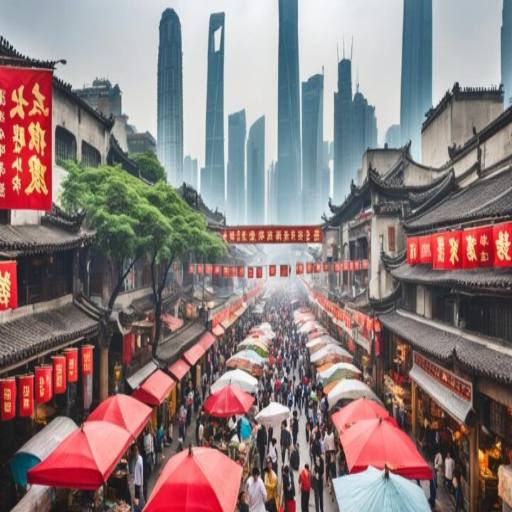
Shamian Island: Strolling Through Colonial Architecture
Geographical Information: Arguably the most economically developed region of Guangzhou, located along the bustling Pearl River, Liwan District is a scenic island of life.
Historical Importance: Illustrative of ‘foreign’ historical ‘Triconch’ style with European concession around the 19th century, it is a must-see for any traveler looking to learn about stunning architecture.
Tourist Attractions: The riverside promenade, accompanied by tree-lined avenues and stunning colonial-preserved buildings, marks this spot where one goes to relax away from the city.
Local Culture: Notable heritage life statues from the colonial era and landmarks such as Our Lady of Lourdes Chapel add rich value and cultural offerings.
Due to its rich history of international relations, Guangzhou’s Liwan District can be photographed from every corner and serves as an oasis for leisurely exploration.
Guangdong Folk Art Museum: Appreciating Local Craftsmanship
Site of the Attraction: It is found in the complex dedicated to the Chen clan’s Ancestral Hall in Guangzhou, a historical site with a building collection from the latter part of the Qing Dynasty.
Cultural Importance: It was an academic temple. Now, it serves as a museum dedicated to the folk art of Guangdong province.
Highlights of the Place: Beautifully crafted halls and yards with superb wood, brick, and stone carvings. Pottery, embroidery, sculpture, and many other delightful traditional crafts displays exhibiting regional heritage are open for visitors.
Artistic Features: The museum conducts some craftsmanship workshops and technique shows for students and other visitors to explain some elements of Guangdong art’s legacy.
Thus, this museum preserves and promotes local crafts and is an educational institution that provides great aesthetic pleasure. It is highly recommended for everyone keen on the cultural heritage of Guangdong province.
Zhenhai Tower and Guangzhou Museum: Discovering City History
History: Simultaneously named the Five-Story Pagoda, Zhenhai Tower was built in 1380 during the Ming Dynasty, making it a landmark of the city now. It is located in Yi Park, Guangzhou.
Significant Features: The tower is approximately 28 meters tall and made of red sandstone and wood. Located on the old city wall, its design mingles traditional Chinese architectural elements with practical defensive purposes, blending it into the wall.
Modern Significance: The Tower is now part of the Guangzhou Museum, which holds many artifacts and relics, some dating back more than 2000 years. These pieces include pottery, ancient calligraphy, and various models depicting ancient settlements.
Contemporary Importance: The museum Zhenhai Tower showcases the city’s evolution and is crucial for understanding the role Guangzhou played in trade and cultural exchange throughout history.
The Zhenhai Tower and the Guangzhou Museum are a wonderful pair to visit for anyone in search of Guangzhou's architectural and historical marvels. They offer a glimpse into the city's deep-rooted history.
Frequently Asked Questions (FAQs)
Q: What is the first thing a tourist should see in Guangzhou?
A: The must-sees in Guangzhou for a first-time visitor are the Canton Tower for the magnificent views of the city, Shamian Island for the intricate colonial style architecture, Chen Clan Academy for a touch of Cantonese history, the Buddhist Temple of the Six Banyan Trees that features the extraordinary Flower Pagoda, and for the wildlife lovers, Chimelong Safari Park does not disappoint. Evening river cruises are available on the Pearl River, and culture buffs can feast their eyes on the treasures in the Guangdong Museum. Yuexiu Park has an ancient city wall and the Five Ram Statue, a well-known symbol of Guangzhou. These landmarks highlight the wealth of history and contemporary innovation in southern China.
Q: What should I do to design an itinerary for a Guangzhou tour that entails the major historical landmarks?
A: To design a Guangzhou tour that is as historical as possible, you should visit the Chen Clan Academy with its well-preserved Qing dynasty compound characterized by courtyard-style architecture. Don’t forget to marvel at 2,000-year-old artifacts at the Museum of the Mausoleum of the Nanyue King. Revere the remnants of the ancient city wall found in Yuexiu Park and the Temple of the Six Banyan Trees built in the 6th century. The area of Guangzhou Thirteen Factories records the history of trade in the city, while Shamian Island has colonial buildings. Try to spend 3 to 4 days in the city if you want to explore these historical places and relish the varied Cantonese cuisine in the city.
Q: What activities would you suggest for families with children visiting the city of Guangzhou?
A. Families on vacation should head straight to the Chimelong Tourist Resort, where there is a world-class Chimelong Safari Park, which houses over 20,000 animals, and Chimelong Water Park. The interactive exhibits at the Guanzhou Science Center are fantastic for inquisitive children. Cable cars can be taken up from Baiyun Mountain, with great hiking trails and scenic views. The edges of the Canton Tower have observation decks and glass walkways, which are stunning. The fantastic building of the Guangzhou Library has spaces dedicated to children's reading. Cruises along the Pearl River give a spectacular view of the illuminated buildings of the city at night, while Banan Park provides playgrounds and boating in the center of Guangzhou.
Q: Should one consider visiting the Museum of the Mausoleum of the Nanyue King in Guangzhou?
A: Certainly! The Museum of the Mausoleum is listed as one of southern China's most important archaeological finds. It’s Nanyue King’s tomb, an underground relic dating back over 2000 years. It contains over a thousand treasures like his splendid jade burial suit, exquisite gold and silver artifacts, and stunningly preserved murals. They offer great English explanations, and the region’s primal civilization is worth knowing. The museum is well placed, making it easy to visit while in Guangzhou, and with its very low ticket price, it offers an incredible amount of history for the money. Most people appreciate it as one of the 15 most cultural places in the city.
Q: What is Chimelong, and why is it listed as one of the main reasons people visit Guangzhou?
A: The resort is one of Guangzhou's most visited places. It contains several world-class attractions like Chimelong Safari Park, Asia's largest wildlife park with rare white tigers and koalas, and Chimelong Paradise, an amusement park with exhilarating rides. Moreover, it has a water park and a bird park. Chimelong International Circus has stunning shows and is integrated with the resort. The resort has full entertainment facilities, including thematic hotels, numerous dining options, and shopping facilities. It is a focal point of most tours to Guangzhou. Additionally, the resort has a family-centered atmosphere while also striving for nature conservation along with a wide range of unique entertainment options offers makes it. Generally, the resort demands 2-3 days to appreciate it fully.
Q: What season suits you best to visit Guangzhou and its attractions?
A: Guangzhou is best visited in autumn (October to December) when the temperatures range from 15-25°C (59-77°F), and the climate is mild, dry, and pleasant. Spring (March to May) can also be comfortable, although slightly warmer and more humid with a chance of rain. All of these seasons are ideal for outdoor leisure and unrestricted visiting the numerous attractions in Guangzhou. Summer (June to September) brings about hotter temperatures, high humidity, frequent rains, and temperatures above 33°C (91°F), mainly making indoor attractions more sought after. Compared to winters (January to February) this time is comparatively milder albeit chillier and overcast. October and November are recommended as there are fewer tourists, and the weather is more comfortable.
Q: What great day trips from Guangzhou will help you discover Southern China?
A: Shenzen is a must-see; it is a one-hour highspeed train ride and boasts modern theme parks and architecture. Foshan is a quick thirty-minute subway ride away, and the Ancestral Temple is an excellent location for martial arts enthusiasts and ceramic craftsmen. While in Kaiping, you can explore the UNESCO-listed watchtowers, roughly a two-hour bus ride. If you want to visit the historic side of Macau, it is a two-and-a-half-hour bus and ferry ride with casinos and beautiful Portuguese colonial architecture. Hong Kong is a two-hour visit with the iconic skyline, and diving deeper into Zhaoqing will reveal the Seven Star Crags within two hours of train travel. Yangshuo is also an option for beautiful countryside views, and Li River is a three-and-a-half-hour high-speed train ride. As mentioned earlier, these destinations highlight the geography of Southern China and are further away from Guangzhou.

